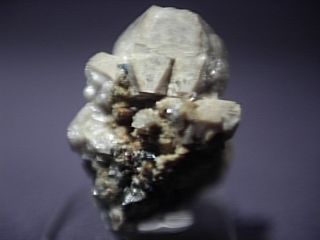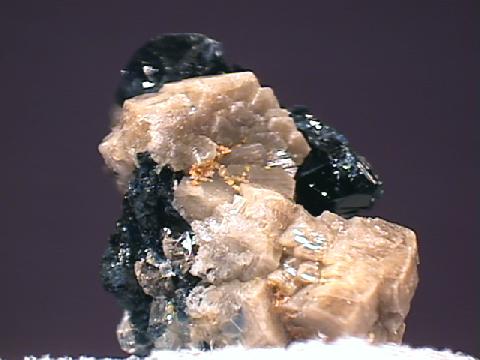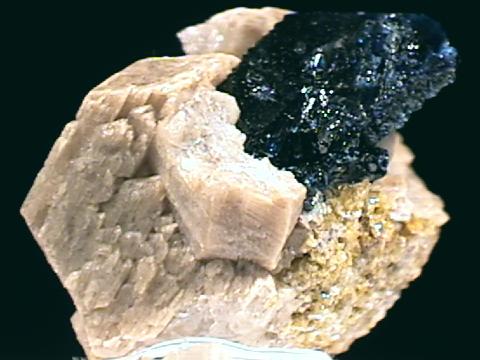 THE MINERAL WHITEITE
THE MINERAL WHITEITE
- Chemistry: (Ca, Fe, Mn)2Mg2Al2(PO4)4(OH)2 - 8H2O, Hydrated Calcium Iron Manganese Magnesium Aluminum Phosphate Hydroxide.
- Class: Phosphates
- Group: Whiteite
- Uses: Only as mineral specimens.
- Specimens
Whiteite is actually a series of minerals that have the same structure but different amounts of certain elements.
They are given the rather pragmatic although not imaginative names of whiteite-(CaFeMg), whiteite-(CaMnMg) and whiteite-(MnFeMg).
Whiteite-(CaFeMg)'s formula is Ca(Fe, Mn)Mg
2Al
2(PO
4)
4(OH)
2 - 8H
2O.
Whiteite-(CaMnMg)'s formula is CaMnMg
2Al
2(PO
4)
4(OH)
2 - 8H
2O.
Whiteite-(MnFeMg)'s formula is MnFeMg
2Al
2(PO
4)
4(OH)
2 - 8H
2O.
The three mineral's properties are similar and most mineral guides, if they have whiteite at all, will refer to all of them simply as whiteite, as is done here.
All are relatively rare phosphate minerals that form from hydrothermal precipitation and hydrothermal alteration of phosphate rich pegmatites.
PHYSICAL CHARACTERISTICS:
- Color is brown, tan, yellow, greenish-yellow, pink to lavender.
- Luster is vitreous.
- Transparency: Crystals are transparent to translucent.
- Crystal System is Monoclinic; 2/m
- Crystal Habits include tabular to stubby prismatic crystals with a rough surface being common.
- Cleavage is perfect in one direction.
- Fracture is uneven.
- Hardness is 4
- Specific Gravity is approximately 2.6 (average for translucent minerals)
- Streak is white.
- Associated Minerals include kulanite, lazulite and siderite among others.
- Notable Occurrences include Rapid Creek, Yukon Territory, Canada and Custer, South Dakota.
- Best Field Indicators are color, locality and crystal habit.
 THE MINERAL WHITEITE
THE MINERAL WHITEITE













